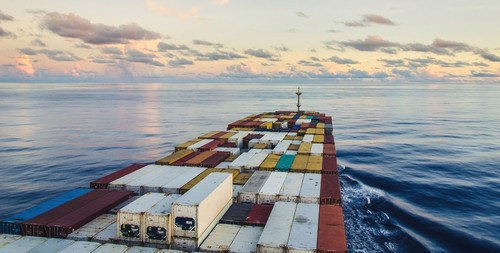Vessels redeployed as new larger tonnage has been delivered are pushing down utilisation rates for carriers in spite of some healthy demand growth says the latest Danish Ship Finance (DSF) report.
Finance experts DSF delivered its latest maritime market review in December 2019 and the company’s research shows that while the cascading of smaller vessels from major trades to routes with less demand is causing vessel utilisation rates to fall. Utilisation rates of tonnage of above 80% is normally considered to be necessary for liner shipping companies to achieve a profit on a trade.
According to DSF deliveries of post Panamax vessels, that is container ships larger than 12,000TEU, in 2019 saw an increase in the post Panamax fleet of 13%, and growth in the available capacity on the Asia/Europe trades of 6%.
“As a result, some 8-11,999TEU vessels have been removed from this trade and put into service on the transatlantic trade. This has led to capacity on this trade increasing by 5%, despite no fleet growth in the 8-11,999TEU segments,” DSF reported.
In the first half of 2019 the Asia/Europe trades recorded growth of 5%, mainly driven by Chinese exports, which appeared to be a “spill-over effect” of the trade war between the US and China, but the increase of the size of vessels in the trade meant that utilisation rates fell.
A similar effect was seen on the transatlantic trade where, “Strong US purchasing power, absorption of tariffs by US importers and Chinese exporters, and a redirection of trade kept trade steady. Head-haul volumes rose by 5.7% on the transatlantic due to solid US demand. Still, the utilisation rate declined on this route,” explained DSF.
The other major east/west trade route remained static according to the Danish finance organisation.
As the post-Panamax fleet develops the composition of the container ship fleet has changed, increasing capacity on a number of trades through the cascading effect. Global trade has, however, declined including both imports, exports and industrial production.
A consequence of this demand decline will be that utilisation rates will fall still further in the coming year across most vessel sizes and could ultimately lead to a bout of scrapping. DSF said, “Our research suggests that the mid-sized vessels (6-7,999TEU) segments are at risk, in particular vessels with low fuel efficiency and no scrubbers installed.”
Smaller vessels are unlikely to be affected in the same way, and the 3-5,999TEU ships in particular expected to benefit from increased intra-Asia trade activity, “potentially a positive side effect of the trade tensions between the US and China,” claimed the DSF report.
Nick Savvides







